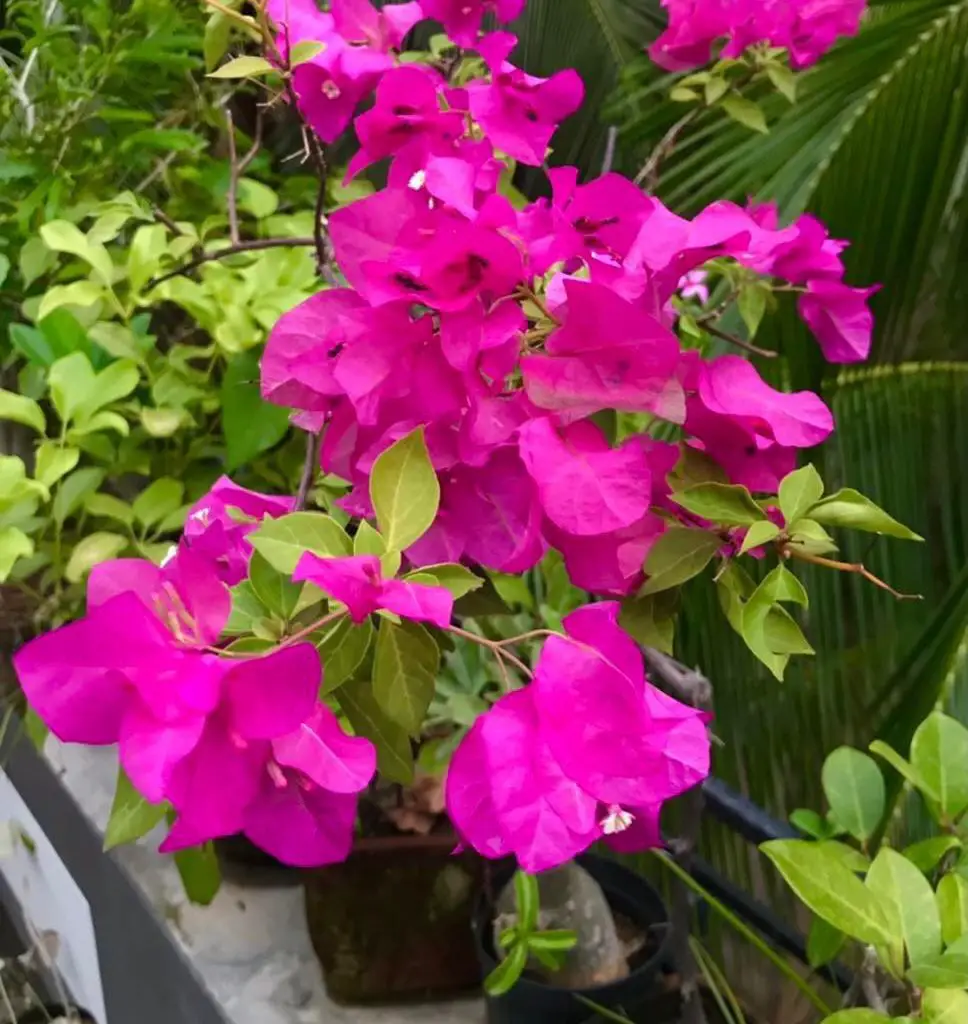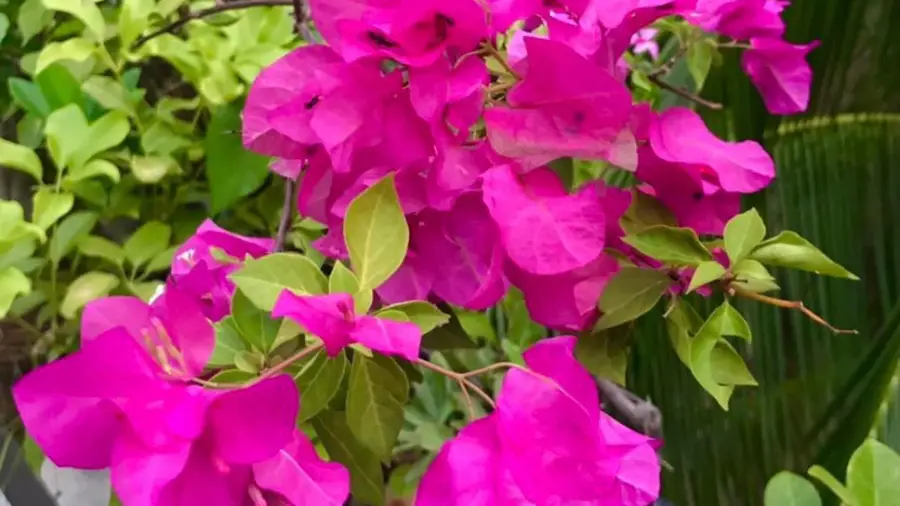Bougainvillea is a stunning plant known for its vibrant and colorful blooms. Native to South America, this plant has become a beloved addition to gardens and homes around the world. While it requires some care and attention, the bougainvillea’s show-stopping display of bright pink, red, orange, or purple flowers makes it well worth the effort. In this blog post, we’ll explore the history, care tips, and creative uses of the bougainvillea plant.
Table of Contents
- Bougainvillea Name Story
- How to Care for Your Bougainvillea Plant:
- Bougainvillea: Attracting Birds and Butterflies to Your Garden
Bougainvillea Name Story
Bougainvillea also known as Paperflower, Lesser bougainvillea, Imperial Delight, Juanita Hatten, Helen Johnson and Afterglow. Botanical name is Bougainvillea.
When you notice this plant, you might wonder why it is called the paperflower. This is because it gives the appearance of an artificial flower. Its small white flowers are usually around colorful paper bracts. It is because of this peculiar texture and appearance, this plant is called the paperflower.

How to Care for Your Bougainvillea Plant:
Bougainvillea plants are known for their show-stopping displays of vibrant and colorful flowers. To keep your plant looking its best, follow these care tips:
- Location: Bougainvillea plants need plenty of sunlight to thrive. Choose a spot with at least six hours of direct sun per day. They also prefer warm temperatures and can suffer in cold climates. If you live in a region with cold winters, consider planting your bougainvillea in a container that can be moved indoors during the winter months.
- Watering: Bougainvillea plants like to be watered deeply but infrequently. Water the plant when the top inch of soil feels dry to the touch. Make sure to allow the soil to dry out a bit between waterings to prevent overwatering, which can lead to root rot.
- Fertilizing: Bougainvillea plants are heavy feeders and require regular fertilization during the growing season (spring and summer). Use a balanced fertilizer every two to three weeks to provide the plant with the nutrients it needs to thrive.
- Pruning: Bougainvillea plants can be trained to grow in a variety of shapes and sizes, but they require regular pruning to maintain their shape and control their size. Prune the plant after each flowering cycle, removing any dead or diseased branches and shaping the plant as desired. Avoid heavy pruning, as it can affect blooming.
- Protection: Bougainvillea plants are sensitive to cold temperatures and frost. If you live in a region with cold winters, protect the plant with a frost blanket or move it indoors. Avoid exposing the plant to drafts, as this can damage the foliage.
- Pests and diseases: Bougainvillea plants can be susceptible to a variety of pests, including aphids and spider mites. Keep an eye out for any signs of infestation, such as yellowing leaves or sticky residue on the plant, and treat promptly with insecticidal soap or neem oil. The plant can also be susceptible to fungal diseases, such as powdery mildew or leaf spot. Ensure proper air circulation around the plant and avoid overhead watering to prevent these diseases.
By following these simple care tips, you can ensure your bougainvillea plant stays healthy and vibrant year after year, providing a stunning display of color to your garden or home.

Bougainvillea: Attracting Birds and Butterflies to Your Garden
Are you looking to add some wildlife to your garden? Look no further than Bougainvillea! Not only do these stunning plants add a pop of color to your garden, but they can also attract beautiful birds and butterflies. With their bright and showy bracts, Bougainvillea plants can entice these creatures to visit your garden and make it their home.
To attract these lovely visitors, there are a few things you can do. Firstly, make sure your Bougainvillea plants are in a sunny location, receiving at least six hours of direct sunlight a day. This will help them thrive and produce eye-catching blooms.
Next, provide a source of water for the birds and butterflies to drink and bathe in. A shallow birdbath or fountain can do the trick and add a relaxing element to your garden.
Lastly, plant nectar-rich flowers like lantana, salvia, and butterfly bush near your Bougainvillea to attract the butterflies and hummingbirds. And don’t forget to provide some shelter, such as shrubs or trees, for the birds to perch and hide in.
By following these simple steps, you can create a Bougainvillea garden that not only adds beauty to your home but also provides a welcoming habitat for our feathered and winged friends.
